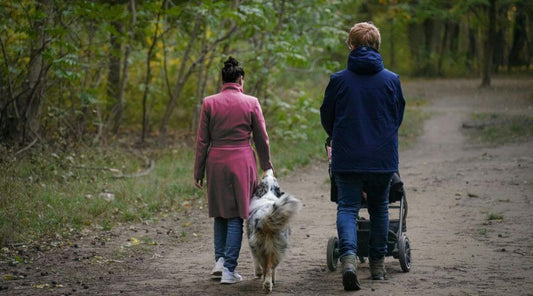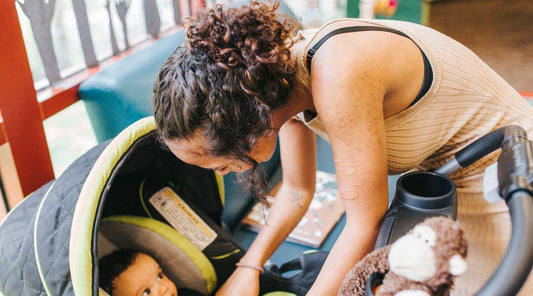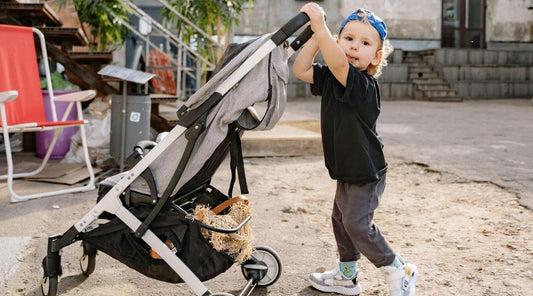Welcoming a newborn into your life is a joyous occasion with a series of important decisions, like choosing between a bassinet and a crib. Each option has its advantages, so it’s important to make an informed decision that best suits your family's needs.
This article will explain the key differences between bassinets and cribs, their pros and cons, and safety considerations. You will also learn how to choose the best option for your newborn.

What Is a Bassinet?
For nightly feedings and care, parents frequently place their newborn infant in a bassinet. Smaller and more fashioned like a basket, a bassinet is a portable crib. Its cover or canopy helps to keep the baby warm and shield from the elements.
Usually built from lightweight materials like wicker, wood, or plastic, they feature wheels or handles for simplicity of portability. Most babies sleep in bassinets for the first few months of their lives before going on to cribs.
Advantages
Ease of Access
Bassinets are intended to offer you easy access, especially during nighttime feedings and care. Many bassinets feature a flexible lowering wall, which simplifies newborn care—especially in cases of a recent C-section.
Most bassinets also have height changes, which allows you to fit the bassinet to the height of your bed. This makes reaching in and tending to your infant simple without stressing your back or neck.
Portability
Bassinets are great for daytime baby care since they can be carried from room to room. Portable baby bassinets are usually lightweight, packable, and easy to store. They're also flexible and useful on vacation or moving from room to room.
Space-Saving
If your house has limited space, bassinets may be a suitable option since they are smaller and more portable than standard beds. They often occupy less space on the floor, freeing more for storage.
Dual-use furniture includes bassinets with built-in storage or changing tables that may be used for more than one purpose. Bassinets that can be fixed on the wall are even available. This can be helpful for parents who want to keep their baby close but don't have room on the floor.
Disadvantages
Less Sturdy
Most of the time, bassinets are not as strong as beds. They might not last as long or be as safe, especially if moved around often.
Limited Space
Because bassinets are so small, babies have little space to roam about. This might not be optimal as babies grow and require more room for moving around and exploring.
Short Lifespan
For the first three to six months of their life, most infants just use their bassinets. When the infant starts to turn over, push up, or reach its weight limit, the bassinet becomes dangerous.
What Is a Crib?
A crib is a special bed designed for babies and toddlers. It's usually made of metal or wood and looks like a rectangle with raised sides. The baby sleeps on a mattress at the bottom. Most cribs let you adjust the mattress height to fit your child's needs as they grow.
They provide a comfortable and safe sleeping space for babies and can be used for many years. Parents looking for a safe and comfortable place for their kids to sleep without buying multiple beds over time will find these a good investment.
Advantages
Cost Effective
Since they are designed to last for years and may be used for more than one child, cribs are a wise purchase if you wish to save money. Their value increases because they can be easily converted into a daybed or toddler bed. You don't have to buy more furniture since certain beds are designed to grow with the child and can be altered to different heights as the child does.
Durability and Longevity
Cribs—which are supposed to be long-term investments for parents—usually last several years. They are made of high-quality materials. Usually, they have to satisfy high safety criteria to ensure their stability and strength; they also lack sharp edges or small components that can suffocate someone. If well maintained, a good crib can be handed on as a family treasure and used for more than one child.
Safety
Babies' crib safety is crucial, and parents can take numerous actions to ensure their infants are safe while they sleep. It’s wise to choose a crib that satisfies the most recent safety guidelines for things like board spacing, mattress height, and other safety aspects. Cribs should also have a firm, flat mattress that fits inside tightly and doesn't leave any space between the mattress and the sides of the bed.
Disadvantages
Higher Initial Cost
Generally speaking, cribs cost more than bassinets—especially if you want one that will be utilized as a toddler bed. On the other hand, they might be a wise long-term investment, given their lifetime use.
Less Portability
Cribs are harder to move around because they are bigger and heavier than bassinets. Most of the time, they are not moved around the house after being set up. Parents who wish their child to sleep in another room could find this problematic.
Takes Up More Space
The size of a crib requires extra space in the nursery or bedroom. Smaller residences or apartment occupants may find this difficult since space is limited.
Safety Considerations
The American Academy of Pediatrics (AAP) believes newborns can sleep securely in either a crib or a bassinet. The AAP suggests putting a cushion pad under the sheet and a sheet that fits tightly around the baby as a safety measure. The AAP has some safe sleep recommendations that you can follow regardless of which one you choose:
- Make sure the baby's bedding, stuffed animals, and clothes are all firmly anchored in the sleeping area.
- When a newborn is in their bassinet or crib, never tilt their head or place them to sleep on their side.
- Sleeping aids, such as sleep positioners, should not be used.
- Avoid putting the baby to sleep in an awkward posture, like a chair, or sharing a bed with them.
- Bumpers for cribs are not allowed.
- Share a room with the infant until he or she is six months old.
Factors to Consider When Choosing Bassinet vs Crib
If the American Academy of Pediatrics has not declared a preference for one type of crib over the other, how can you determine which is best for your family? Your decision-making process could be affected by several elements below:
Baby's size and development
There is a weight restriction on whatever bassinet you buy for your baby, even if it may be more convenient initially. For example, a maximum weight of 15 to 20 pounds is all that some bassinets have. Your newborn will outgrow its bassinet very fast if it weighs more than 10 pounds.
Additionally, keep in mind that your infant can still outgrow the bassinet's capacity for support, regardless of whether their weight is below the bassinet's weight restriction.
Babies who are already showing signs of mobility, such as rolling over or starting to scoot with their legs, should not be placed in a bassinet due to the increased risk of asphyxia or entrapment.
However, if your kid is small or born early, a crib may seem too big for both of you to start using. Some babies find comfort in a more intimate environment like a bassinet.
Expense
Your infant will outgrow most bassinets in a few months, so you will most likely still have to buy a crib. Consider your financial situation before deciding what to do. Could you perhaps afford a bassinet and a crib? Purchasing the crib and using it would be a more thriftful choice.
Space
Before your baby comes out, consider the space your house offers. A bassinet might be a better fit for areas not quite large enough for a crib. If you plan to keep your baby in your room for the first six months, a bassinet might be more handy than a crib. Some cribs, meanwhile, are small and perfect for confined spaces.
Choose the Right Sleeping Option for Your Newborn
There’s no absolute answer when it comes to choosing between a bassinet and a crib. The best choice for your newborn depends on your family's unique needs, space constraints, budget, and lifestyle preferences.
To sum up, bassinets offer convenience, portability, and a cozy environment for a baby's early months. On the other hand, cribs provide a long-term, safe, and stable sleeping solution that can grow with your child.
Overall, buying a good-quality bassinet or a crib can provide safety and comfort to ensure your baby has a restful and secure sleep environment.








